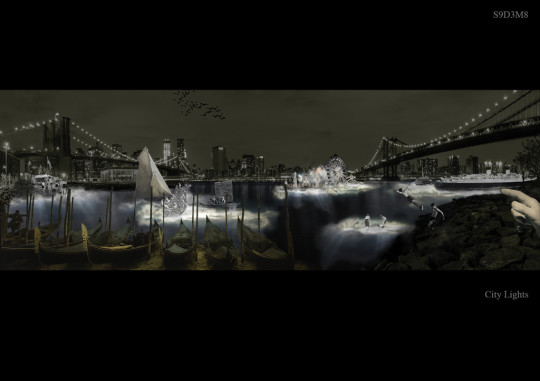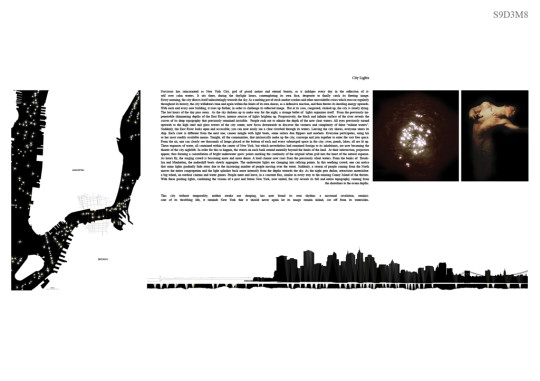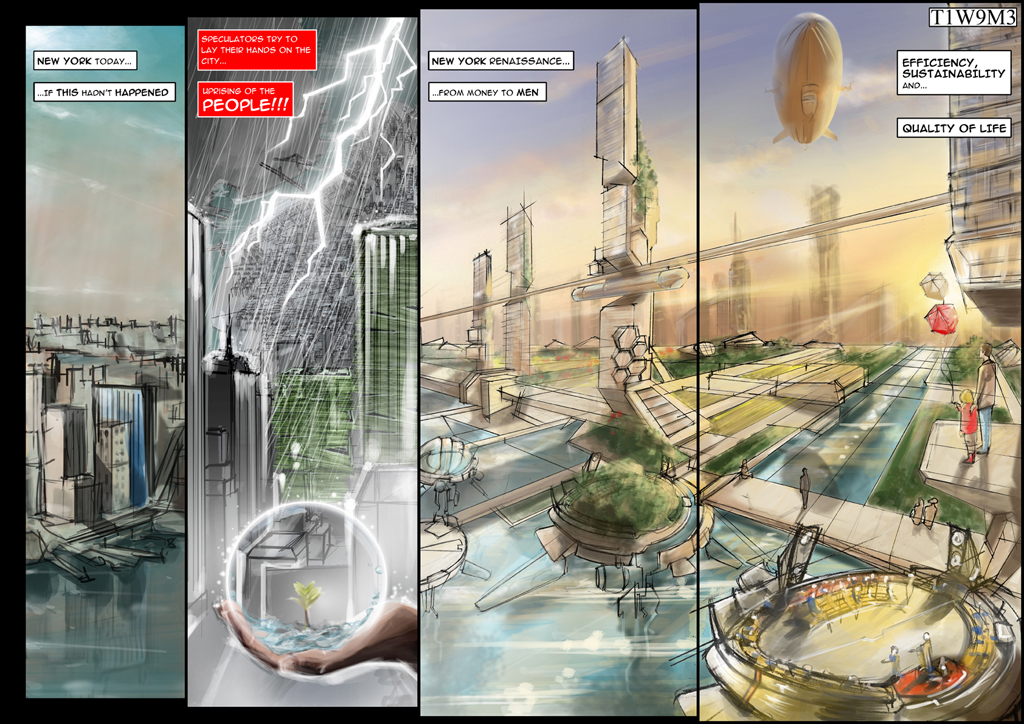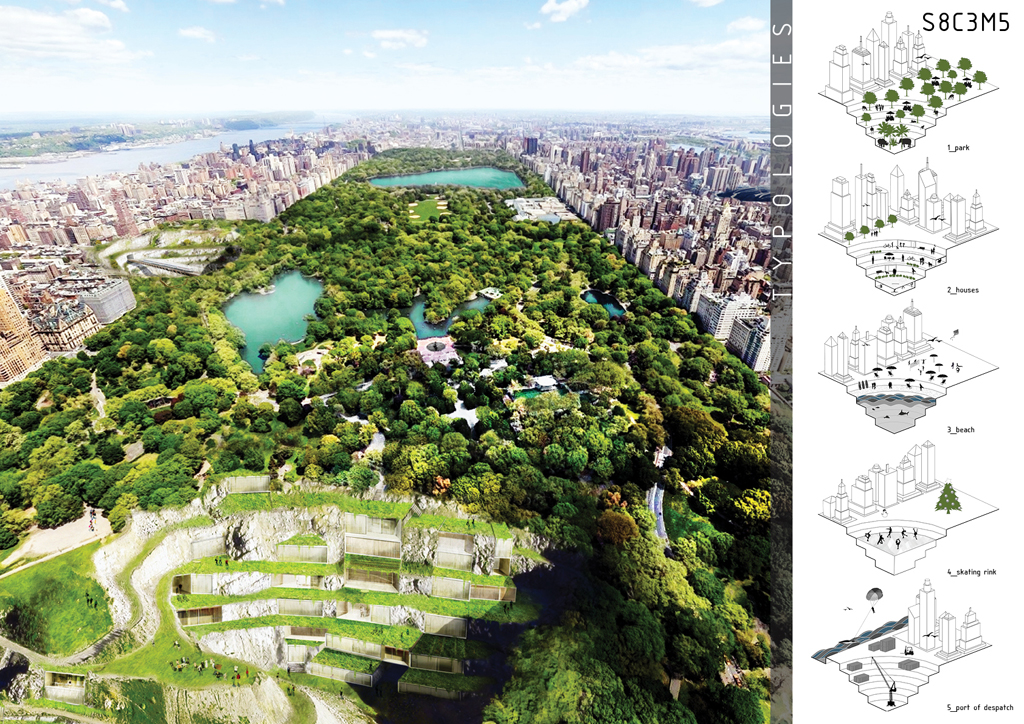Info:
Title: City Lights - Code: S9D3M8Contest: NY / 2012
By: N. Mankowski
Views: 2785 Likes: 0
Votes:
JOSHUA PRINCE-RAMUS4 EVA FRANCH I GILABERT4 ROLAND SNOOKS1 SHOHEI SHIGEMATSU4 ALESSANDRO ORSINI3 MITCHELL JOACHIM23.0
City Lights

 Narcissus has reincarnated as New York City, god of proud nature and eternal beauty, as it indulges every day in the reflection of itself over calm waters. It sits there, during the daylight hours, contemplating its own face, desperate to finally catch its fleeting image. Every morning, the city directs itself unhesitatingly towards the sky. As a melting pot of stock market crashes and other unavoidable crises which reoccur regularly throughout its history, the city withdraws time and again within the limits of its own shores, as a defensive reaction, and then throws its dazzling energy upwards. With each and every new building, it rises up further, in order to challenge its reflected image. But at its core, congested, choked up, the city is slowly dying.
Narcissus has reincarnated as New York City, god of proud nature and eternal beauty, as it indulges every day in the reflection of itself over calm waters. It sits there, during the daylight hours, contemplating its own face, desperate to finally catch its fleeting image. Every morning, the city directs itself unhesitatingly towards the sky. As a melting pot of stock market crashes and other unavoidable crises which reoccur regularly throughout its history, the city withdraws time and again within the limits of its own shores, as a defensive reaction, and then throws its dazzling energy upwards. With each and every new building, it rises up further, in order to challenge its reflected image. But at its core, congested, choked up, the city is slowly dying.
The last hours of the day pass away. As the sky darkens up to make way for the night, a strange ballet of lights organizes itself. From the previously impenetrable shimmering depths of the East River, intense sources of lights brighten up. Progressively, the black and infinite surface of the river reveals the curves of its deep topography that previously remained invisible. People rush out to admire the depth of the now clear waters. All eyes previously turned upwards to the high steel and glass towers of the city center, now focus downwards to discover the vastness and complexity of these “radiant waters”.
Suddenly, the East River looks open and accessible; you can now easily see a clear riverbed through its waters. Leaving the city shores, everyone steers its ship. Each crew is different from the next one; canoes mingle with light boats, some sailors don flippers and snorkels. Everyone participates, using his or her most readily available means. Tonight, all the communities, that intrinsically make up the city, converge and join together to enter the vast free space.
From the air, one can clearly see thousands of lamps placed at the bottom of each and every submerged space in the city; river, ponds, lakes; all are lit up. These expanses of water, all contained within the center of New York, but which nevertheless had remained foreign to its inhabitants, are now becoming the theater of the city nightlife. In order for this to happen, the streets on each bank extend mentally beyond the limits of the land. At their intersection, projectors appear, thus forming a constellation of bright underwater spots: points marking the continuity of the original urban grid into the heart of the natural expanse.
As hours fly, the surging crowd is becoming more and more dense. A loud clamor now rises from the previously silent waters. From the banks of Brooklyn and Manhattan, the makeshift boats slowly aggregate. The underwater lights are changing into rallying points. In this seething crowd, one can notice that some lights gradually fade away due to the increasing number of people moving over the water. Suddenly, a swarm of people coming from the North moves the entire congregation and the light splashes back more intensely from the depths towards the sky. As the night gets darker, attractions materialize: a big wheel, an outdoor cinema and water games. People meet and leave, in a constant flux, similar in every way to the teeming Coney Island of the thirties.
With these gushing lights, combining the visions of a past and future New York, now united, the city reveals its full and entire topography, running from the shorelines to the ocean depths.
This city without temporality, neither awake nor sleeping, has now found its own rhythm: a nocturnal revelation, reminiscent of its throbbing life, it reminds New York that it should never again let its image remain inland, cut off from its watersides.






